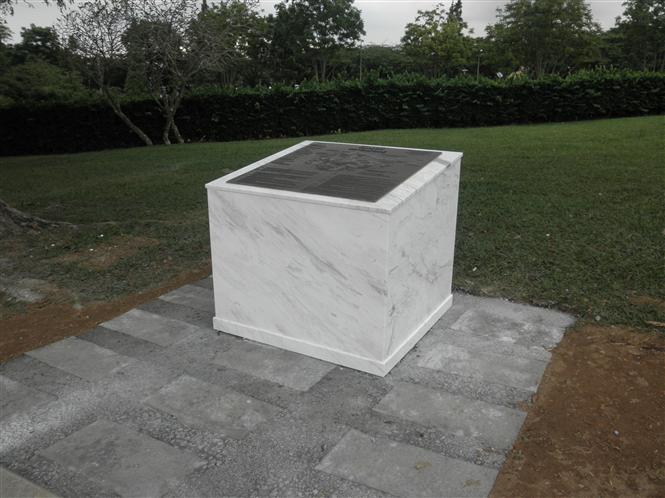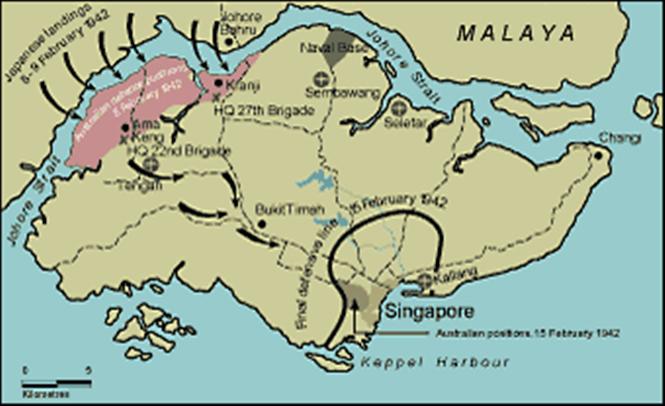Fall of Singapore Memorial
Description
A bronze plaque with inscription mounted on a concrete plinth.
History
The fall of Singapore to the Japanese Army on 15 February 1942 is considered one of Britain’s greatest defeats in the Second World War. Singapore had stood for many years as a potent symbol of British power in South-East Asia and was supposedly impregnable as a fortress. Japanese forces had steadily driven the Commonwealth forces defending the Malay peninsula southwards in a relentless but short campaign until, on 31 January 1942, they withdrew into Singapore.
The defence of Singapore was poorly conceived and conducted, despite having far superior numbers and clear indications that the Japanese would concentrate their attack on the island's north west. With Commonwealth forces committed in Europe, the Japanese had an advantage in aircraft and in the quality of their equipment. To oppose the Japanese forces the British commander, Lieutenant General Edgar Percival, mainly had an Indian corps of two divisions and the Australian 8th Division under Major-General Gordon Bennett, which was understrength. In trying to defend the entire coastline, General Percival spread his men too thinly.
When the Japanese landed on 8 February, the north-west of the island was held by the Australian 22nd Infantry Brigade. On 9 February a second Japanese landing force struck between the Causeway and the mouth of the Kranji River, an area held by the Australian 27th Infantry Brigade. The Australians were unable to hold these positions and by the morning of 10 February there were Japanese troops on most of north-west Singapore.
This was the first time British forces had come up against a full-scale attack by the Japanese and the attack, based on speed, ferocity and surprise, never allowing the British forces time to re-group, soon shattered any thoughts of the Japanese fighting a conventional form of war. Australian, British and Indian troops fought desperately to hold the Japanese at various defensive lines. A counter-attack on 10-11 February failed and the battle-weary and depleted battalions withdrew to the perimeter of the city. By 13 February the Japanese were within five kilometres of the Singapore waterfront, the entire city now within range of Japanese artillery. Hard fighting continued but on 15 February General Percival made the difficult decision to surrender with the ceasefire coming into effect at 8.30 that night. After days of desperate fighting, all Commonwealth forces lay down their arms and more than 100,000 troops became prisoners of war, together with hundreds of European civilians interned.
The surrender of Singapore demonstrated to the world that the Japanese Army was a force to be reckoned with and also ushered in three years of appalling treatment for the Commonwealth POWs, including approximately 15,000 Australians. Those service men and women who died in the fall of Singapore or did not survive the prison camps are buried in the Kranji War Cemetery or commemorated on the Singapore Memorial to the Missing.
Construction Information
The plaque was arranged by Dr Ross Bastiaan.
Location
9 Woodlands Road, Kranji, Singapore.
The memorial stands to the left of the steps leading up to the entrance of the Kranji War Cemetery, 22 kilometres from the city of Singapore, on the north side of Singapore Island overlooking the Straits of Johore.


